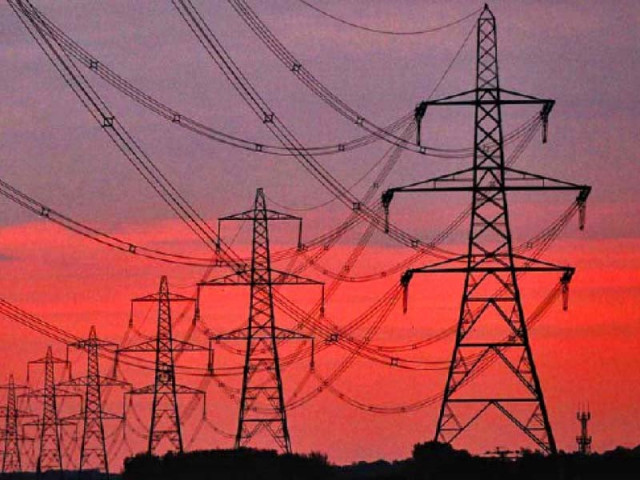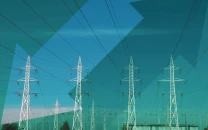Power supply chain – an analysis
Outages signal fragile supply chain, though generation capacity stands at 38,719MW

Effectively managing the subject chain has remained a perennial challenge for Pakistan.
This article is an attempt at a brief analysis of its snags in the backdrop of increased load-shedding faced in the second half of FY21, which has largely tapered off now. The generation capacity of Pakistan (Central Power Purchasing AgencyGuarantee and K-Electric baskets, both) currently stands at 38,719MW, which is far more than the connected load.
However, the above load-shedding indicates that the supply chain is still quite fragile. A net increment of only 7% was observed in FY21 vis-a-vis FY20 in the power generation catered to by the ex-Wapda distribution companies (DISCOs)/CPPA-G basket. However, the aggregate generation for fiscal year 2018, 2019, 2020 and 2021 had respectively been 133,669, 136,532, 134,745.70 and 150,400 gigawatt-hours (GWh) approximately.
Thus, the generation in FY21 was 12% higher than FY20, which seems significant. The figure includes the annual power generation and purchases of K-Electric, which remained at 20,177GWh, ie 9% higher than FY20. As to the sub-sectoral behaviour, the annual variation in domestic load from FY18 to FY20 had been 10.97%, -0.83% and 4.24% respectively, in commercial load it remained at 9.55%, -1.52% and -6.06%, in industrial load it was 14.39%, 4.70% and -10.6% and in agriculture it was 9.90%, -3.21% and -0.53%. It was definitely challenging to plan the future consumption on the basis of this erratic pattern and the all engulfing menace of Covid-19.
Still, the situation was relatively normal till March 2021 when power generation on the CPPA-G basket increased by 30% year-on-year and 23% versus February 2021. Hydel power has proven to be a saviour in many such situations earlier. However, it was able to raise its contribution only marginally in March and April 2021 compared to the generation in the corresponding period in FY20.
The increased contribution of 692GWh by coal, 200GWh by furnace oil and 900GWh by liquefied natural gas (LNG) vis-a-vis March 2020 also partially filled the gap in March 2021. However, the generation continued to accelerate and the net increment stood at 45% in May 2021 compared to March 2021. In March 2021, an upsurge of 41% was observed in generation on the K-Electric basket too. This included a 32% increment in its own generation and 53% in purchases, which included a substantial increase in intake from the CPPA-G basket.
The intake was more than twice in June 2021 of the level in January 2021. The government introduced a special industrial power package in November 2020. Its impact started becoming visible since end-February 2021. Secondly, the authorities implemented a decision in March 2021 for the entire country, ie to shift as much gas-based captive power plants to the national grid as possible with the intent of diverting the freed gas for centralised generation.
It was expected to make available an additional 150 million cubic feet per day (mmcfd) of gas. Though the plants were able to partially shift to the grid in March 2021, probably, the T&D system’s capacity challenges increased the losses. This needs a thorough study because gas generated even lesser power in FY21, ie 14,340GWh compared to 15,064GWh in FY20 (CPPA-G system).
The study of the impact of diversion can help in future planning, especially when hydel contribution remained at 38,804GWh in FY21, slightly above 38,700GWh in FY20 (CPPA-G system). The above factors increased the drag on expensive fuels, causing an increase in the generation cost. In addition, occasional snags in the LNG supply chain affected the utilisation of associated plants. Also, coal imports were lower by 1.1 million tons from July 2020 to February 2021 compared to the preceding year and increased requirement. This, along with the three times increase in its price over the past one year, also appears to have impacted its supplies.
Furthermore, at least partially the load-shedding seemed “revenue based”. For instance, on June 8-9 on the CPPA-G system against the available generation of 23,500MW, the power drawn was only 16,040MW. The analysis remains incomplete until the following associated critical aspects are highlighted: After every few years, we hear that we have overcapacity, despite 25% of the population being devoid of electricity and per capita annual electricity consumption being a meagre 658 kilowatt-hour (kWh) (China 5,297kWh, India 972kWh and Norway 26,492kWh).
Thus the “surpluses” are a phenomenon of sluggish development only. Similarly, we hear a lot of criticism of capacity charges, take-or-pay clauses, etc. They are an essential contractual norm; not an aberration. Their values and corresponding commercial terms, of course, are a function of the professional capacity of the relevant teams. Circular debt is mostly presented as an essential evil. It is not.
During FY20, the DISCOs contributed a loss of around Rs59 billion due to their inefficiency in T&D losses (ie over and above the allowable threshold of 15.97%) and Rs160 billion in failed recovery. T&D losses in China, Japan and Singapore are 5%, 4.3% and 2% respectively. Thus, Rs400 billion can be annually saved by focusing on this aspect alone. Similarly, the public sector plants are generally 20% less fuel efficient. We can fulfill 25% of our un-served demand just by addressing this gap.
However, no tangible change is possible in this respect till the entire chain, including the SOEs boards, is professionalised and the government has disengaged itself from directly managing it. What needs to be done? First, heavy penalties need to be introduced by Nepra to improve the safety records and an independent statutory team of world-class energy professionals is essential for the nomination and performance evaluation of all the SOEs’ boards.
Second, a debottlenecking study of the existing hydel grid and the impact of diversion of capacity power load to the national grid is essential. Third, shutting down some inefficient plants seems to have affected the utilisation of gas. Attention to this aspect can make available 150 mmcfd of gas with further additions through the development of existing discoveries.
Similarly, underground gas storage is an operational and a strategic imperative. Fourth, gas consumption (800 mmcfd) by the fertiliser industry necessitates diversification, like China, to the indigenous coal-based fertiliser. Fifth, the imported coal needs to be replaced with local coal. India is already on this drive. Similarly, high T&D losses necessitate encouraging off-grid solutions. I am confident that the above recommendations can help in calibrating/developing Pakistan’s future power consumption plans.
THE WRITER IS A PETROLEUM ENGINEER AND AN OIL AND GAS MANAGEMENT PROFESSIONAL


















COMMENTS
Comments are moderated and generally will be posted if they are on-topic and not abusive.
For more information, please see our Comments FAQ